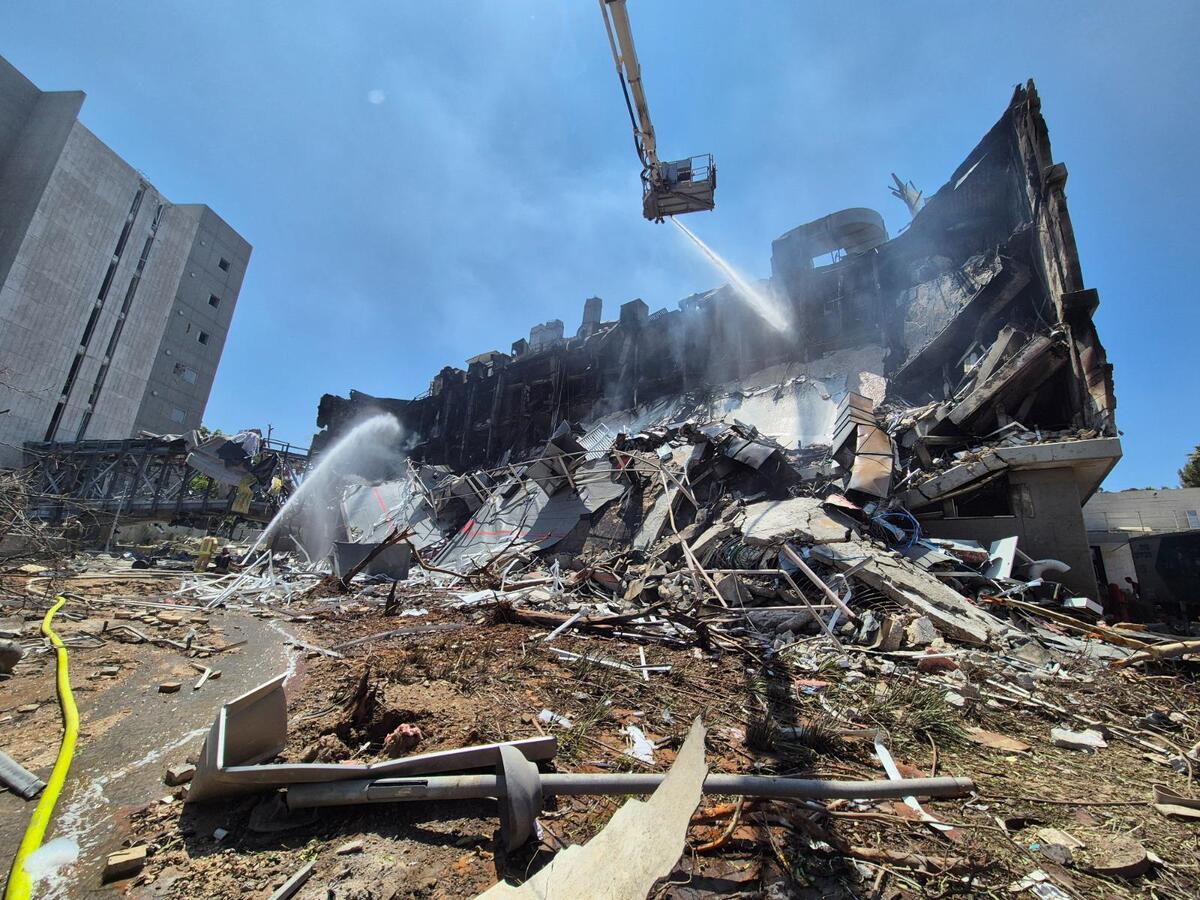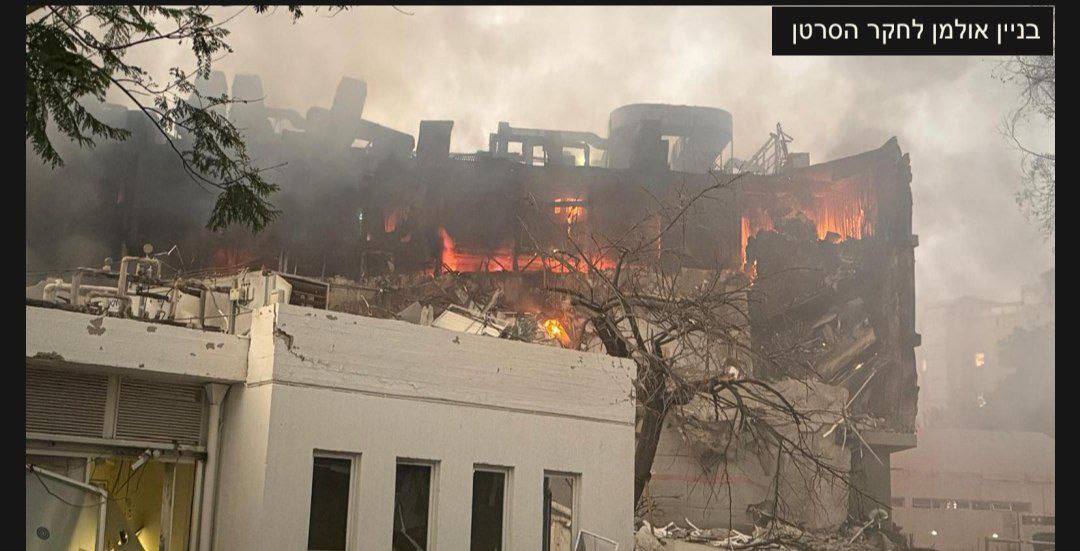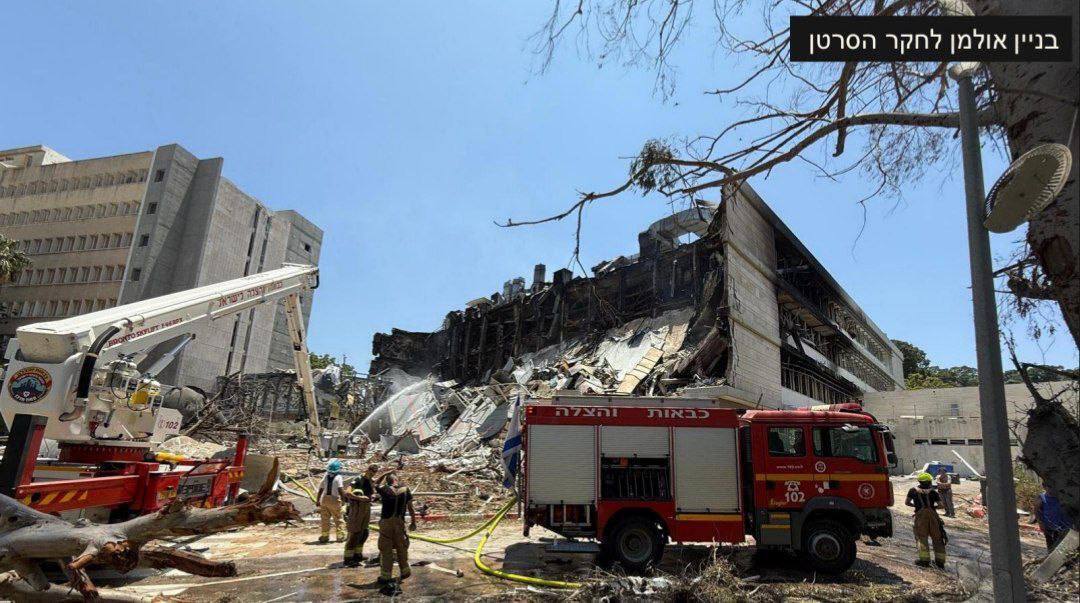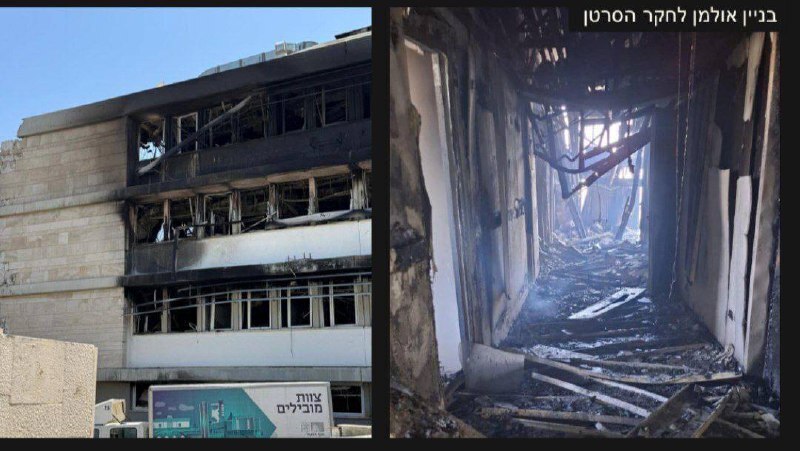Weizmann in ruins: How Iran’s missiles shattered Israel’s top military research hub

Iran's retaliatory missile attacks turned the Weizmann Institute of Science, affiliated with the Israeli military and located in Rehovot, south of Tel Aviv, into a burning ruin.
Once a cornerstone of Israel's scientific and military research, known for its close ties to the regime’s military-industrial complex, the institute is now destroyed and unusable.
A Zionist expert stated: "It must be acknowledged that the Iranians were tracking missile impact points in Israel—not just at Weizmann, but also at numerous military bases and strategic sites that we have not yet publicly disclosed."

Channel 13 (Hebrew) reported: "The situation is such that the settler population is unaware of the accuracy and scale of the Iranian attacks and the damages inflicted on many locations."
Despite military censorship efforts, surveillance footage and photos have been released showing ballistic strikes on buildings and the severe destruction they caused.
Decades of research lost at Weizmann
On June 15, 2025, Iranian ballistic missile strikes caused significant damage to the Weizmann Institute of Science in Rehovot, hitting and destroying multiple facilities within the complex.
A laboratory that was scheduled to open in 2025 suffered catastrophic damage, with some reports describing it as virtually destroyed.
Another existing building dedicated to biological and computational sciences was also severely damaged. At least one laboratory caught fire—this center hosted critical research programs.

A Zionist expert describing the destruction of his lab said: "In less than 15 minutes, I saw images of a fire consuming a laboratory that had been my second home for 22 years—three entire floors collapsed. Nothing remains: no data, no images, no notes, no history."
Around 45 research laboratories across the Weizmann Institute were damaged, affecting approximately 400 to 500 researchers.
According to Zionist media, the precision of the strike was "by no means accidental" and deliberately targeted an advanced research center linked to the Israeli military.
Alon Chen, president of the Weizmann Institute, admitted in an interview with Channel 13 that Iran’s ballistic missiles had struck key buildings of the vast complex with extreme precision, causing extensive and irreparable damage.
His statement contradicted earlier claims by some Israeli officials who had downplayed the missile attacks as accidental with minimal damage.
Chen told the Israeli television channel: "The destruction is extensive, and our initial assessments estimate damages ranging from $300 million to half a billion dollars."
The Planetary Sciences Building, which housed geochemistry labs and other chemistry-related programs, was severely damaged—not by a direct hit, but by shockwaves from a missile strike on an adjacent chemistry building. Though not directly targeted, the facility has become largely unusable.
Overall, about 90% of the Weizmann Institute’s buildings suffered some form of damage—from direct missile strikes to collateral effects like shockwaves, shrapnel, and fires. This included shattered windows, collapsed lab floors, destroyed electrical systems, and water damage caused by firefighting efforts.

The attacks also disrupted access to shared scientific equipment and expensive, specialized machinery used by multiple research groups, compounding the institute’s losses.
Physical damages are estimated at between $300 million and $570 million. Reconstruction efforts are expected to take years. However, the loss of biological samples and decades' worth of research data is considered, in many cases, irreparable.
Weizmann: An institute with strong military ties
The Weizmann Institute of Science presents itself as a "civilian" scientific institute, and much of its research is
openly published in academic journals. However, many of its projects overlap with military research, though these connections are not always publicly acknowledged.
Zionist and Western media often highlight the institute’s achievements in basic and applied sciences—such as physics, chemistry, biology, and mathematics—while downplaying its military applications.
Nevertheless, the Weizmann Institute maintains clear and documented links with the Israeli military through collaboration with military contractors like Elbit Systems, conducting research in artificial intelligence, drone technology, multi-purpose innovations, and nuclear research.
In October 2024, the institute announced a collaboration with Elbit, a major Israeli military contractor, to develop "bio-inspired pioneering materials for defense applications"—an initiative that explicitly connects the institute to military technology development.
Additionally, the Weizmann Institute has worked with Elbit Systems on projects such as the development and supply of a space telescope for Israel’s ultraviolet astronomy satellite program (ULTRASAT). While the program is officially scientific, its dual-use potential has been acknowledged.
The institute's complex consists of two parts: a smaller residential area and a larger scientific section. Iran targeted the latter, effectively striking the heart of the institute with highly accurate attacks.
Regarding the censorship of images showing the extent of the damage, Chen confirmed these restrictions and explained that their purpose is to prevent Iran from obtaining information that could assist in future attacks on such sites.